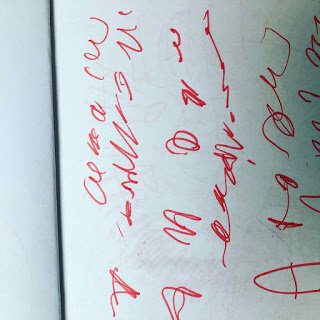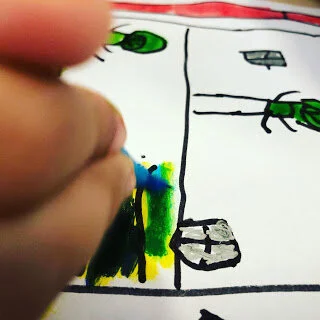PLAY AS A 'SELF-RENEWING RESOURCE'
The first weeks of the school year are now behind us. It has been 25 days of relationships building with people, spaces and materials. There has been time to play; to discover shared interests, new possibilities with materials and develop friendships. Days and weeks of ups and downs, of joys and tears, of surprises and familiarity, of coming out of our shells or leaving not enough space for others.
Then, 'all of a sudden', it feels like 'things are falling into place'. There are so many connections, questions, requests and discoveries that it sometimes feels hard to keep track of everything that is going on. A 'domino game' that started with small blocks reappears at the light table, notes are written everywhere, a child wants to go to the forest to look for squirrels, another one really wants to visit a princess house, watercolour paintings dry on the rack, a group of children are pretending to travel on the bus and I stand there mesmerised by the beauty of what unfolds around me.
What I notice is what Seth Godin describes so beautifully in one of his latest blog posts about initiative: we’re not going to run out. It’s a self-renewing resource. He writes 'the only way to get initiative is to take it. It’s never given.' This speaks to me about the power of choice and the ability for children to direct their learning through play. Young children never stop playing and are incredibly resourceful in finding new possibilities. Play truly is a space for initiative which shapes the learning that is going on. Sometimes research is initiated independently, at other times a small group may take charge of something before others do:
How do I make a line?
How tall am I?
What belongs together?
How do I communicate through writing?
How do I make green?
How does an insect behave?
I followed up on the requests to visit a princess house. I asked Aya where we should go and she said 'Well, you know." I had to tell her that I don't know where to find the princess house. Apparently 'you have to find the dragons, if you find them, you find the princesses'. I am thinking of going along with Aya's thinking by proposing to create our own princess house and involving the children in the construction of this new play space. I wonder where this will take us and what it will reveal about the children's relationships with each other and their surroundings. I am hoping they will become even more aware that they can shape the classroom space and the learning just as much as I do.
I wonder:
What kind of initiatives have you noticed lately with your students?
How do you document these moments and how does it inform your planning?
How do you engage with requests, theories or interests that may feel 'uncomfortable' (for example weapon / superhero play or conversations about death)?
Seth Godin reminds us that many of us have been educated or raised in such a way that initiative was not valued and taken away from us. Early childhood settings that value play provide a space for agency. This is how young children learn about themselves and others and how to live together.






